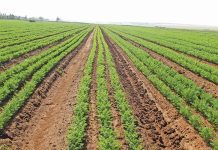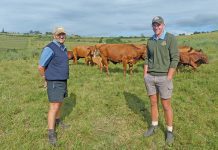Most urban consumers interviewed in a study carried out by the University of Arizona didn’t realise that meat, dairy, and fruit come from living things that use natural resources to grow. This highlights the theory that the increasing distance between field and fork is causing shoppers to undervalue food as a commodity and leading them to believe that waste is harmless. At the same time, consumers’ tastes are changing towards more nutritious and more diversified diets, which tend to boost the consumption of water.
A hidden problem behind the current food price crisis is that as much as half of all food grown is lost or wasted before or after it reaches the consumer. While agricultural practices are mostly blamed for wasting water, consumers and businesses also play a role. Losses of food between the farmers’ field to the dinner table, in storage, transport, processing and retail are enormous – perhaps as high as 50%. So we must begin to understand that reducing food loss and wastage reduces water requirements in agriculture. In other words, making the food chain more efficient means saving water that can be used to produce food. O ne reason for losses in the food chain is an increasing distance between the place where food is produced and where it is eaten.
And enhancing efficiency in one part of the chain, such as in production, can be nullified if losses and wastage occur or increase in other parts of the chain. Losses in the field between planting and harvesting could be as high as 40% of the potential harvest in developing countries, due to pests and pathogens. Meanwhile, losses in processing, transport and storage are conservatively estimated at 10% to 15% in quantity terms, but could amount to 25% to 50% of the total economic value because of reduced quality or spoilage. In addition, large losses and wastage occur during retail and consumption due to discarding excess perishable products, product deterioration and food not eaten.
The New York Times has estimated that an average US family of four throws away 50kg of food a month. Reports from Sweden suggest that families with small children throw away about 25% of the food they’ve bought, while total losses and wastage in the food chain are close to 50%. In the UK, most of the food wasted by households is used for landfill (close to 6 million tons). The environmental impact of this disposal is high: every kilogram of food generates the equivalent of 4,5 times that amount of carbon dioxide. Altogether, some 18 million tons of carbon dioxide are generated in the UK from discarded food. E arlier this year, the Hallmark/Wetland Meat Packing Company in California voluntarily recalled about 65 million kilograms of raw and frozen beef products, following an investigation by the Department of Agriculture’s Food Safety and Inspection Service.
But what did not reach the headlines is the water wastage involved in this kind of incident. o produce the 65 million kilograms of beef requires 650 billion litres, mainly to grow the fodder for the animals. This is enough water to irrigate about 100 000ha of dryland, or supply more than enough for Las Vegas, which annually extracts about 350 billion litres from Lake Mead. Concern is also turning to eating too much, with the number of overweight and obese people on the increase even in developing countries, partly because of a high intake of energy-dense foods. Globally, there are now roughly 50% more overweight and obese people (1,2 billion) than there are malnourished people (860 million). Overeating and wastage of food contribute to natural resource depletion and has environmental implications in terms of greenhouse gas emissions, for instance.
Growing biomass for fuel is another issue. Depending on the type of feedstock, it is possible to cultivate biomass for energy purposes in areas where conventional food production is not feasible. For example, in India about 13 million hectares of wasteland are being earmarked for feedstock that can grow in low rainfall conditions. In Brazil, efforts are being made to combine crops for bioenergy, sugarcane and other agricultural produce such as milk. Less waste in the food chain saves water and money and increases consumers’ disposable incomes. In fact, curbing losses and wastage in the food chain can save more water than the use of low-flush toilets and water-saving washing machines. Meanwhile, farmers have to continue supplying enough food to take care of both our necessary consumption and our wasteful habits. – Roelof Bezuidenhout |fw








